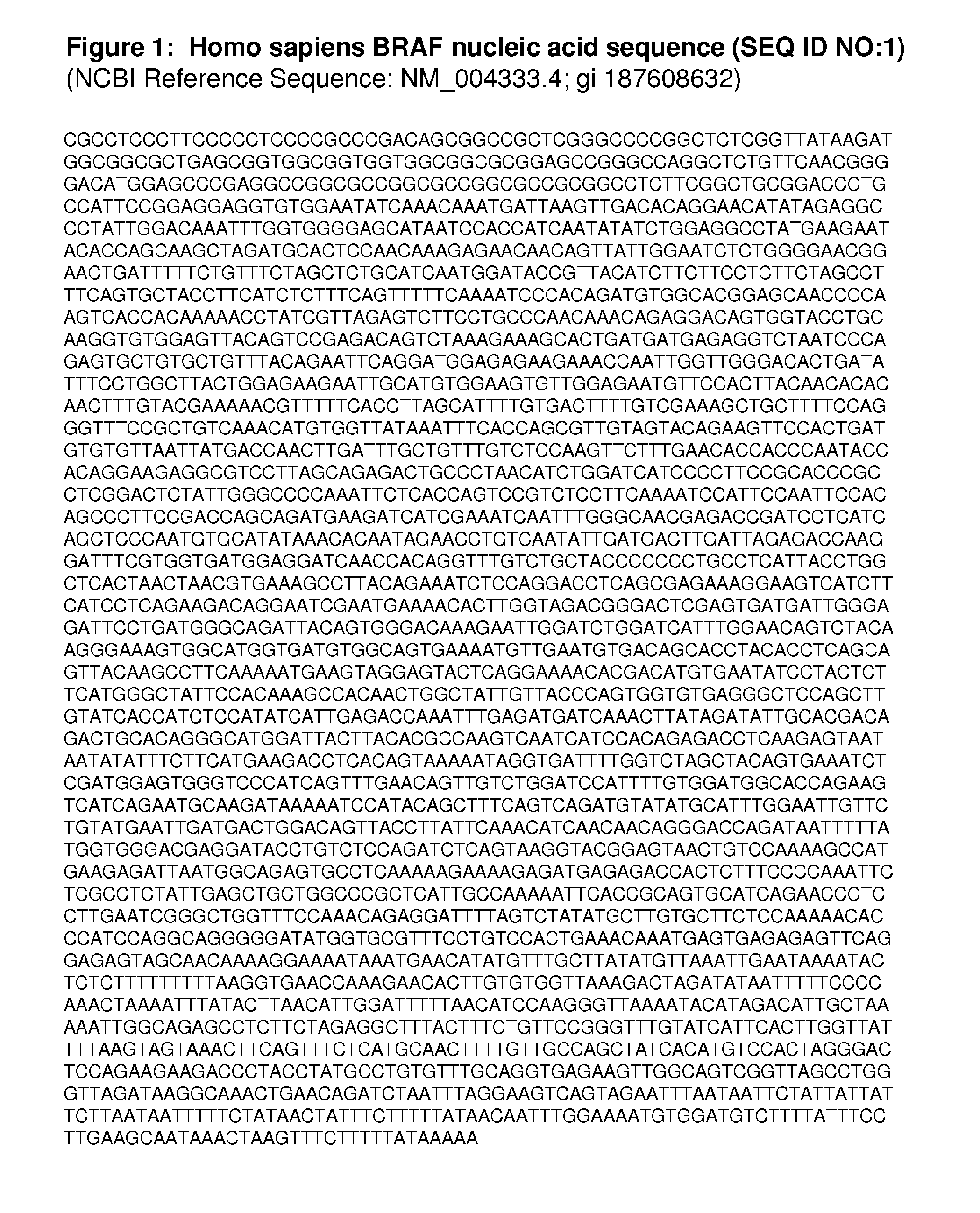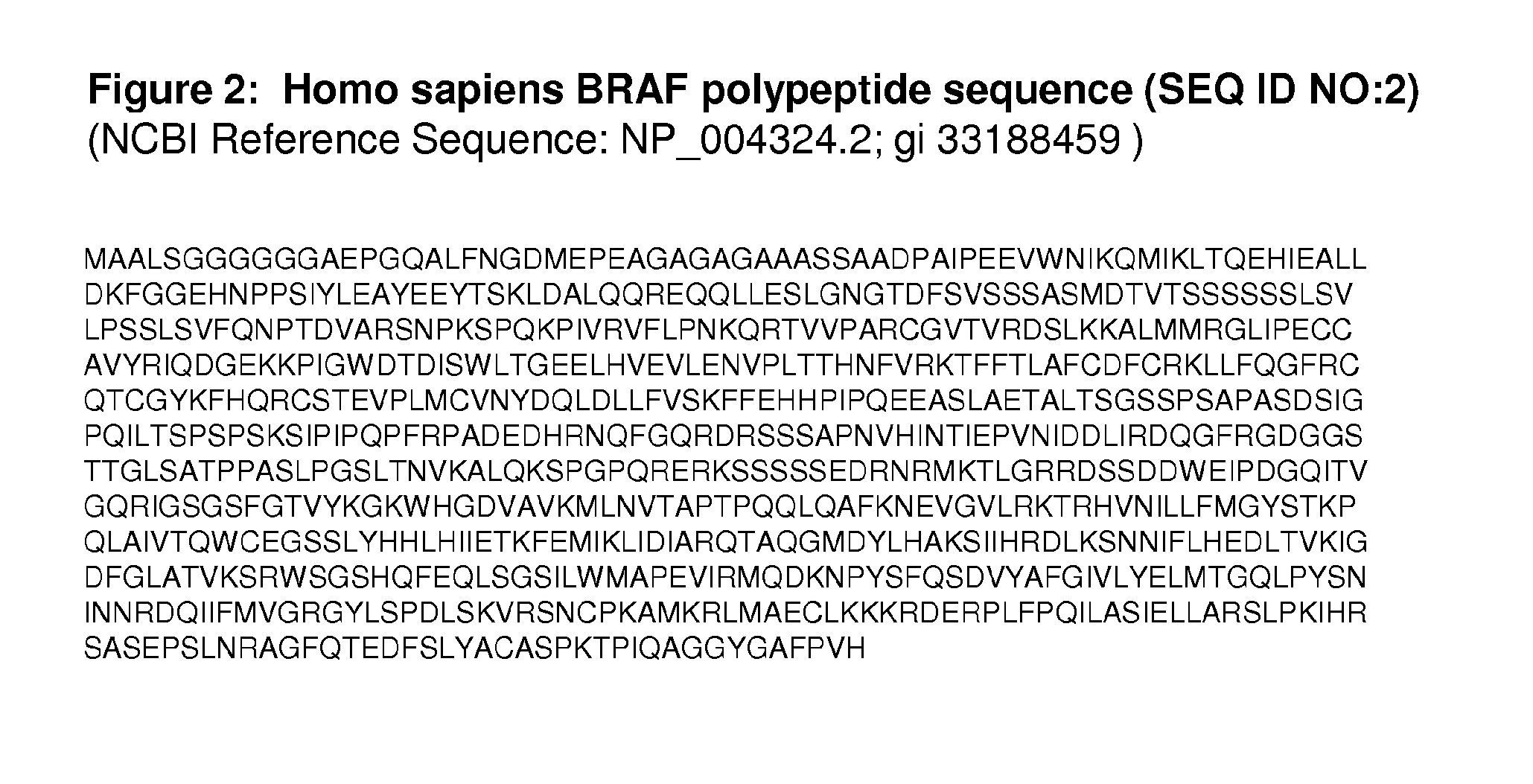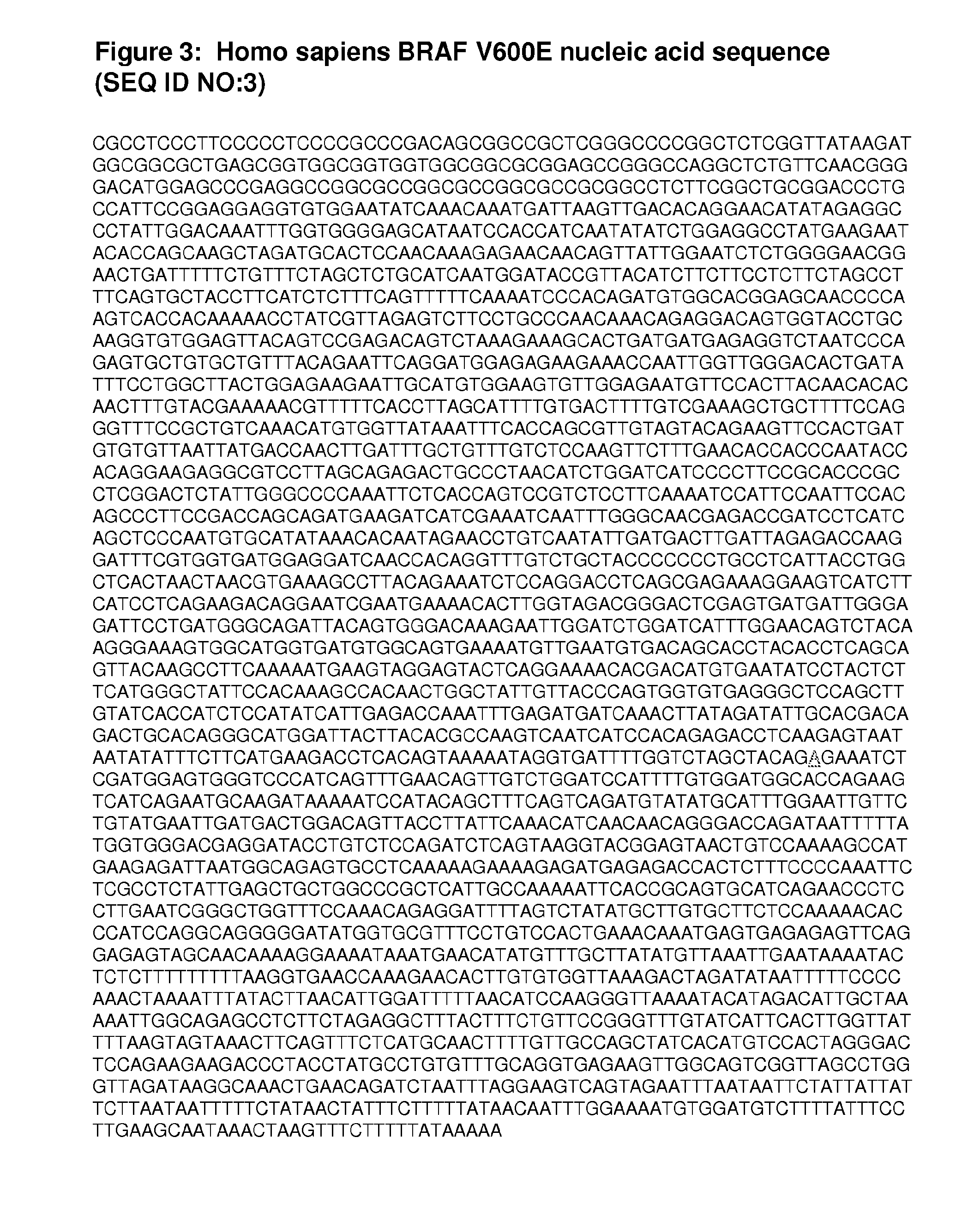BRAF Mutations Conferring Resistance to BRAF Inhibitors
a technology of braf inhibitors and mutations, applied in the field of mutation-mediated resistance to chemotherapeutic treatment of cancer, can solve the problem that the given chemotherapeutic agent can become ineffective in certain individuals
- Summary
- Abstract
- Description
- Claims
- Application Information
AI Technical Summary
Benefits of technology
Problems solved by technology
Method used
Image
Examples
example 1
BRAF-V600E Random Mutagenesis Screen (RAF265 and PLX4720)
[0152]Generation of mutagenized libraries was accomplished using a modification of published methods. Briefly, mutagenesis was performed by propagating a BRAF(V600E) expression plasmid (pWZL-Blast-BRAF(V600E)) in E. coli deficient for the MutS, MutD5- and MutT-DNA repair genes (XL1-Red; Stratagene). Plasmid DNA was extracted from these bacteria and amplified in XL1-Blue E. coli (Stratagene). The mutagenized BRAF(V600E) plasmid or non-mutagenized control was used to infect A375 melanoma cells. After selection with blasticidin, cells were plated on 15-cm dishes and cultured in the presence of RAF inhibitors (RAF265 or PLX4720; 2 μM or 1.5 μM respectively) for 5 weeks until resistant clones emerged. Resistant clones were sequenced to identify mutations that occurred with high frequency. Results are shown in FIG. 5 (RAF265 screen) and FIG. 6 (PLX4720 screen). FIG. 7 depicts the locations of three BRAF mutations that arose with hig...
example 2
Western Blot Analysis of pMEK1 / 2 and pERK1 / 2 Activation in Cells Containing BRAF Mutants
[0153]293T cells were transfected with 6 μg of pWZL(BLAST)-BRAF for each putative resistance allele and subsequently treated with a range of concentrations of the BRAF(V600E) inhibitor PLX4720 (0, 0.08, 0.4, 2, 5 and 10 μM) for 16 hours. Immunoblot studies were performed using standard procedures. Briefly, the treated cells were lysed with TNN buffer containing protease inhibitor (Roche), NaF and NaVO3 (1 mM each). Lysates were quantified (Bradford assay), denatured (95° C.), and resolved by SDS gel electrophoresis. Proteins was transferred to nitrocellulose membranes and probed with primary antibodies recognizing BRAF (Santa Cruz; 1:10,000 dilution), p-ERK1 / 2, p-MEK1 / 2 (Ser-217 / 221), and α-tubulin (Cell Signaling Technology; 1:1,000 dilution). After incubation with the appropriate secondary antibody (anti-rabbit or anti-mouse IgG, HRP-linked; 1:1,000 dilution) (Cell Signaling Technology), protei...
example 3
[0154]293T cells (70% confluent) were transfected with 15 μg pc-DNA-DEST40 containing BRAF(V600E) putative resistance alleles, kinase-dead BRAF, or wild-type. At 48 h postinfection, lysates were generated by standard methods. Pull-down using cobalt beads was performed for 30 min at 4° C. on 1 mg of whole cell extract. The protein-bound cobalt beads where incubated with 20 μL ATP / magnesium mixture (20 mM Mops pH 7.2, 25 mM β-glycerophosphate, 5 mM EGTA, 1 mM Na3VO4, 1 mM DTT, 75 mM MgCl2, and 0.5 mM ATP), 20 μL of dilution buffer (20 mM Mops, pH 7.2, 25 mM β-glycerol phosphate, 5 mM EGTA, 1 mM sodium orthovanadate, 1 mM DTT), and 1 μg of inactive MEK1 (obtained from Millipore) for 30 min at 30° C. The phosphorylated MEK1 product was detected by immunostaining using a p-MEK1 / 2 antibody (Cell Signaling Technology).
PUM
 Login to View More
Login to View More Abstract
Description
Claims
Application Information
 Login to View More
Login to View More - R&D
- Intellectual Property
- Life Sciences
- Materials
- Tech Scout
- Unparalleled Data Quality
- Higher Quality Content
- 60% Fewer Hallucinations
Browse by: Latest US Patents, China's latest patents, Technical Efficacy Thesaurus, Application Domain, Technology Topic, Popular Technical Reports.
© 2025 PatSnap. All rights reserved.Legal|Privacy policy|Modern Slavery Act Transparency Statement|Sitemap|About US| Contact US: help@patsnap.com



